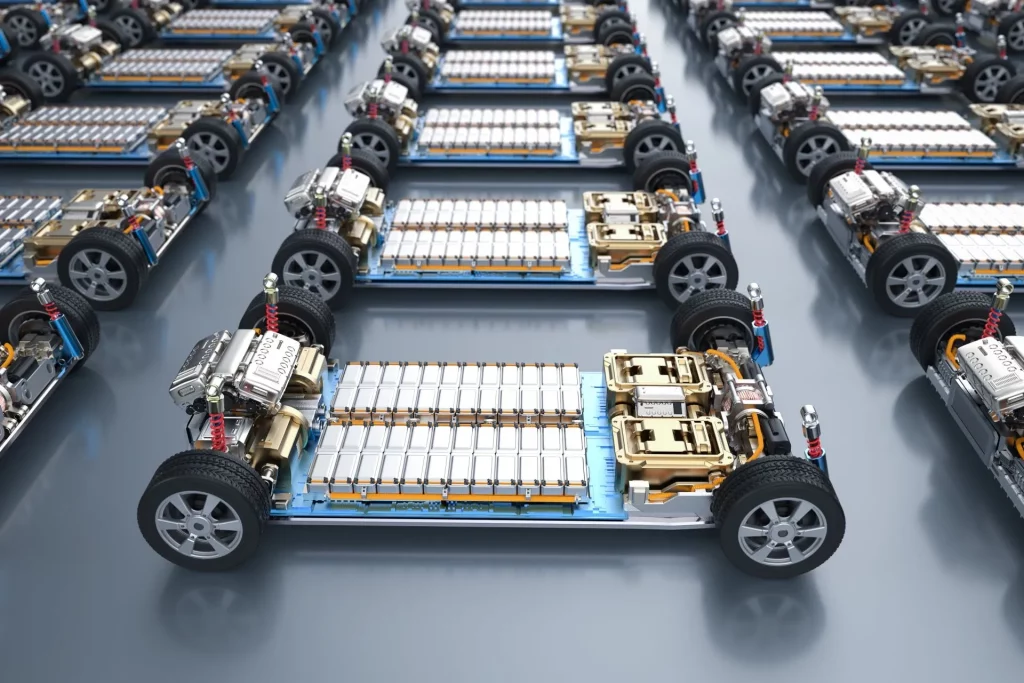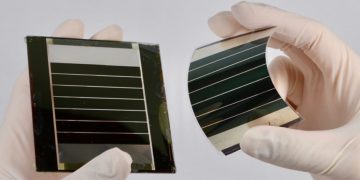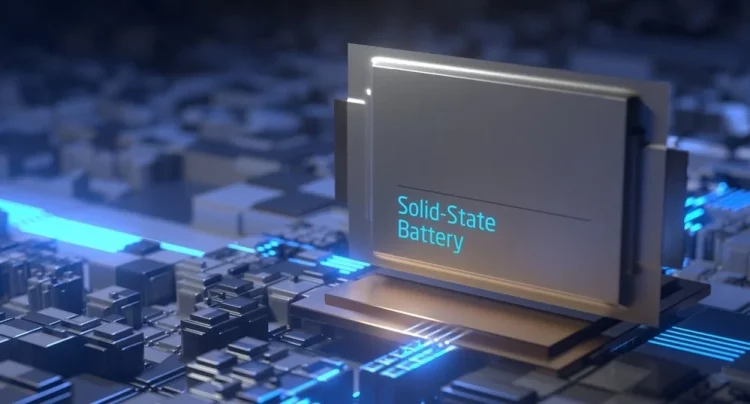Introduction
The global automotive industry is undergoing a monumental transformation, with Electric Vehicles (EVs) emerging as the key to a cleaner, more sustainable future. Central to this shift is the evolution of battery technology, which powers EVs and directly influences their performance, range, cost, and overall appeal. As battery technology continues to advance, it’s driving rapid growth in the EV market, making electric cars more accessible and practical for consumers. This article explores the latest breakthroughs in battery tech, examines how these innovations are accelerating the adoption of electric vehicles, and considers the future of EVs as they become a mainstream choice for transportation.
1. The Role of Batteries in Electric Vehicles
Before delving into the advancements in battery technology, it’s essential to understand the central role that batteries play in electric vehicles.
1.1 How EV Batteries Work
EV batteries are the powerhouses that store and release energy to run the vehicle’s motor. Most electric cars today use lithium-ion (Li-ion) batteries, which are popular due to their high energy density, lightweight design, and relatively long lifespan. These batteries consist of multiple cells that store electricity and release it when needed to drive the motor, charge onboard systems, and power other vehicle functions.
- Energy Density: The amount of energy that can be stored per unit weight or volume is crucial for electric vehicles because higher energy density means longer driving ranges and fewer charging stops.
- Charging Time: A major consideration for consumers is how long it takes to recharge the battery. Innovations in battery chemistry are helping to reduce charging times and increase the convenience of EVs.
- Battery Lifecycle: EV batteries need to last long enough to make the vehicle a viable alternative to internal combustion engine (ICE) vehicles. Modern batteries are designed to be durable and retain most of their capacity over many years and thousands of charge cycles.
1.2 The Importance of Battery Innovation for the EV Industry
Battery technology is a key factor in the growth of electric vehicles. Innovations in this area affect EVs in several ways:
- Cost Reduction: Battery prices have been one of the primary barriers to EV adoption. As battery costs decrease, the price of electric cars is falling, making them more affordable to a larger consumer base.
- Extended Range: Longer battery life means longer driving ranges, reducing “range anxiety”—the fear of running out of power before reaching a charging station.
- Faster Charging: The ability to charge EV batteries faster is a major factor in enhancing the overall EV ownership experience.
2. Recent Breakthroughs in EV Battery Technology
The EV industry is witnessing groundbreaking developments in battery technology, and several key innovations are setting the stage for more efficient, affordable, and practical electric vehicles.
2.1 Solid-State Batteries: The Next Big Thing
One of the most exciting developments in battery technology is the development of solid-state batteries. Unlike traditional lithium-ion batteries, which use a liquid electrolyte, solid-state batteries use a solid electrolyte that can improve energy density, safety, and charging speed.
- Higher Energy Density: Solid-state batteries could offer much higher energy densities, which would translate into longer ranges for EVs. This could eliminate the need for large, heavy batteries and help reduce the overall weight of the vehicle.
- Improved Safety: Solid-state batteries are less likely to overheat or catch fire compared to liquid-based lithium-ion batteries. This could make them a safer option, especially in the case of accidents or manufacturing defects.
- Faster Charging: These batteries could also charge significantly faster, reducing the time needed to recharge an EV and making long road trips more convenient.
Example: Toyota is one of the leaders in developing solid-state batteries and aims to showcase their first solid-state battery-powered vehicle by the early 2020s.
2.2 Lithium Iron Phosphate (LFP) Batteries
While lithium-ion batteries have dominated the EV market for years, Lithium Iron Phosphate (LFP) batteries are emerging as a strong alternative. LFP batteries have several advantages over traditional lithium-ion batteries, including cost, safety, and longevity.
- Lower Cost: LFP batteries are cheaper to manufacture because they do not require nickel or cobalt, two expensive and often ethically controversial materials used in traditional lithium-ion batteries. As the cost of LFP batteries decreases, the overall cost of EVs could decrease, making them more affordable for consumers.
- Increased Lifespan: LFP batteries tend to have a longer lifespan than conventional lithium-ion batteries, meaning EVs with LFP batteries could maintain a higher capacity over a longer period, reducing the need for battery replacements.
- Safety: LFP batteries are considered safer due to their more stable chemical composition, reducing the risk of fires or overheating.
Example: Tesla and BYD are integrating LFP batteries into their vehicles, with Tesla offering LFP-equipped versions of its Model 3 in markets like China.
2.3 Silicon Anode Batteries
Another promising area of development is the use of silicon anodes in batteries. Traditional lithium-ion batteries use graphite anodes, but replacing them with silicon can greatly enhance the performance of the battery.
- Higher Energy Density: Silicon anodes can store more lithium ions, increasing the energy density of the battery and, in turn, the driving range of the EV.
- Faster Charging: Silicon-based batteries can charge faster due to the higher capacity of silicon to absorb lithium ions.
- Improved Efficiency: Silicon anodes are also more efficient in energy conversion, meaning less energy is lost during charging and discharging.
Example: QuantumScape, a startup backed by Volkswagen, is working on solid-state batteries with silicon anodes, hoping to revolutionize the EV market.
2.4 Recycling and Second-Life Batteries
As EV adoption increases, managing used batteries is becoming an increasingly important challenge. Innovations in battery recycling and second-life batteries (used EV batteries repurposed for other uses) are helping to mitigate environmental impacts and make better use of battery resources.
- Battery Recycling: New technologies are making it easier and more cost-effective to recycle lithium-ion batteries, extracting valuable materials like lithium, cobalt, and nickel for reuse in new batteries. This reduces the need for mining and decreases the environmental impact of battery production.
- Second-Life Batteries: EV batteries that have reached the end of their useful life in vehicles can be repurposed for other applications, such as energy storage systems. This allows batteries to continue being useful even after they no longer meet the performance requirements of a vehicle.
Example: BMW has partnered with RWE to reuse old EV batteries in stationary energy storage systems.

3. Impact of Advancements on the EV Market
As battery technology continues to improve, it’s driving several key trends that are shaping the future of the EV market.
3.1 Lowering the Cost of Electric Vehicles
One of the main obstacles to EV adoption has been their high initial cost, primarily driven by the cost of batteries. As battery costs continue to decline, the overall price of EVs is also dropping. This makes EVs more competitive with internal combustion engine (ICE) vehicles and expands the potential market for electric cars.
- Cost Parity with ICE Vehicles: According to BloombergNEF, the price of EV batteries has dropped by nearly 90% over the past decade, and it’s expected to continue falling. By the mid-2020s, EVs could reach price parity with gasoline vehicles, making them affordable for the average consumer.
- Incentives and Subsidies: In addition to the technological advancements, governments worldwide are introducing tax incentives and subsidies to encourage EV adoption, further reducing the overall cost for consumers.
3.2 Longer Driving Ranges and Reduced Range Anxiety
Battery advancements are also directly addressing range anxiety, the fear that an EV won’t have enough power to complete a trip. With higher energy densities, solid-state batteries, and faster charging solutions, EVs are becoming more reliable for long-distance travel.
- Extended Range: New battery chemistries are increasing the driving range of EVs. For instance, some upcoming EVs could offer ranges of over 500 miles per charge, making them comparable to gasoline-powered cars.
- Ultra-Fast Charging: The development of ultra-fast charging stations, combined with battery improvements, could allow EVs to charge in as little as 10-15 minutes, making long trips more feasible.
Example: Lucid Motors has unveiled its Lucid Air sedan with an estimated range of over 500 miles, one of the longest ranges for any production EV.
3.3 Expanding EV Infrastructure
As battery technology advances, there’s also a significant push to improve EV infrastructure, particularly charging networks. With the growing demand for EVs, charging stations are becoming more widespread, allowing for faster and more convenient charging.
- Supercharger Networks: Companies like Tesla are expanding their proprietary networks of fast-charging stations, while other automakers are collaborating on public charging networks to improve accessibility.
- Wireless Charging: Future developments in wireless charging technology may allow for charging without the need for plugging in, further enhancing the convenience of EVs.
4. Challenges Ahead for EV Battery Innovation
While the future of EV battery technology is promising, several challenges remain.
4.1 Raw Material Supply and Sustainability
The production of EV batteries relies on materials like lithium, cobalt, and nickel, which are in limited supply and often come with environmental and ethical concerns related to mining practices. As EV adoption increases, ensuring a sustainable and ethical supply chain for these materials will be crucial.
**4.2 Scal
ability of New Technologies**
Many of the emerging battery technologies, like solid-state batteries, are still in the experimental or prototype stages. While they show great promise, scaling these technologies for mass production and ensuring their affordability and reliability remains a challenge.
4.3 Infrastructure Development
To truly facilitate mass EV adoption, further development of charging infrastructure is required. This includes building more fast-charging stations, ensuring widespread access to charging networks, and developing faster and more efficient charging technologies.
Conclusion
Advancements in battery technology are at the heart of the EV revolution, and the innovations we’re seeing today are paving the way for a more sustainable and efficient future for electric vehicles. From solid-state batteries to lithium iron phosphate and silicon anodes, each breakthrough brings us closer to the mass adoption of electric cars. As the cost of batteries continues to drop, driving ranges increase, and charging times shorten, electric vehicles will become an increasingly practical option for consumers around the world. While challenges remain, the future of electric mobility is brighter than ever, and the road to a greener, cleaner future is accelerating.


















































Discussion about this post